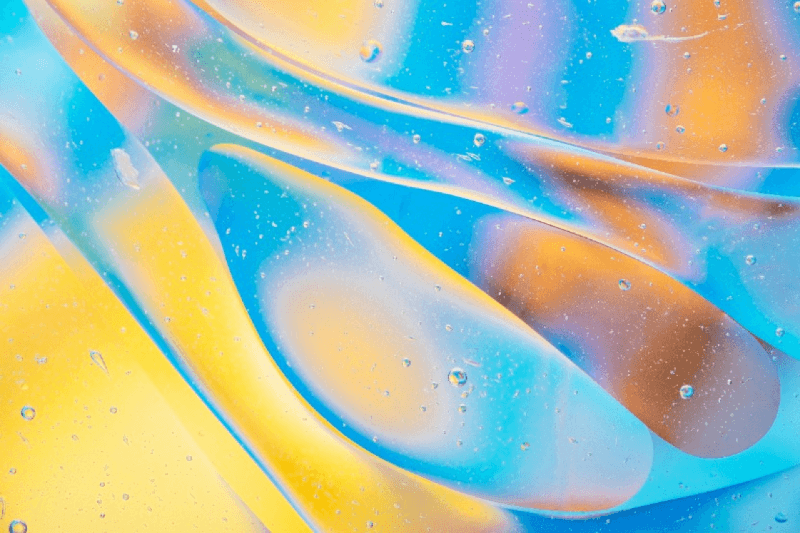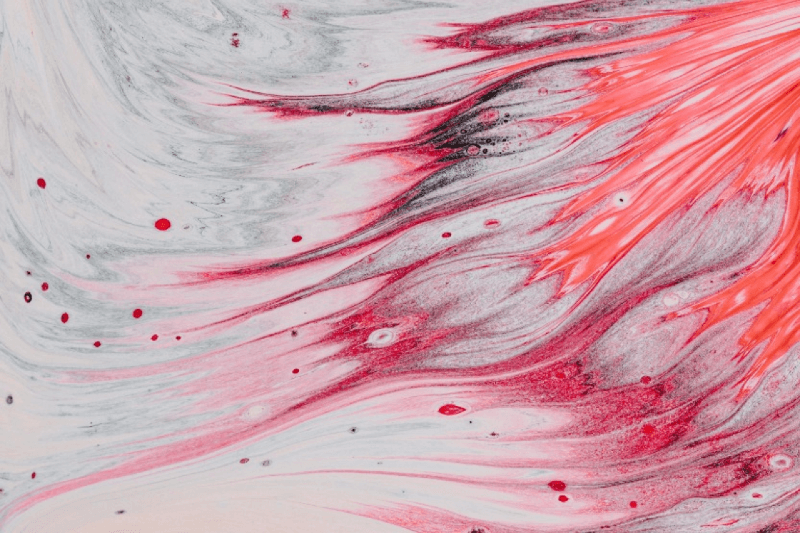Single-molecule localization microscopy to study synapse organization and dynamics
Single-molecule localization microscopy techniques offer unparalleled resolution in imaging cellular and synaptic architecture, surpassing conventional microscopy. Dr. Sabine Lévi harnesses advanced single-molecule microscopy techniques, like STORM and PALM, alongside quantum dot tracking, to unravel synapse organization and receptor dynamics, driving breakthroughs in neuroscience and cellular biology.
This video is licensed under a Creative Commons Attribution-NonCommercial-NoDerivatives (CC BY-NC-ND) license. You are free to share it for non-commercial purposes with proper attribution, but no modifications or adaptations are allowed.
1. Why use this method?
Stochastic Optical Reconstruction Microscopy (STORM) and Photoactivated Localization Microscopy (PALM) belong to a family of imaging techniques, known as single-molecule localization microscopy. These methods allow detailed mapping of cellular structures and their molecular organization at nanoscale resolution, transcending the limits of standard optical microscopy. They can be used to visualize cytoskeletal structures, myelin organization, and synaptic architecture, including receptor nanodomains. STORM and PALM operate on the principle of precise localization of individual fluorophores, which can be switched between fluorescent and non-fluorescent states. The subsequent merging of images with distinct subsets of activated fluorophores results in high-resolution reconstruction of the analyzed sample. Additionally, quantum dot-based single-particle tracking (QD-SPT) can be employed to effectively map not only the spatial organization of neuronal cells, but also their real-time movement. This technique utilizes fluorescent nanocrystals called quantum dots (QDs), which are characterized by high stability and brightness. Labeling of living cells with quantum dots enables long-term frame-by-frame tracking of individual molecules of interest. In the field of neuroscience, the QD-SPT can be applied to track receptor dynamics in synaptic clefts, elucidating how receptor trafficking across neuronal membranes affects synaptic strength and neurotransmission.
2. What you’ll need
STORM/ PALM super-resolution
Materials and equipment:
- Inverted microscope (e.g. N-STORM Nikon Eclipse Ti) equipped with a high numerical aperture objective (100x oil-immersion objective NA 1.49) dedicated for super resolution, lasers (e.g. 405, 488, 561, 647 nm), the Total Internal Reflection Fluorescence (TIRF) illumination to decrease background, the Nikon Perfect Focus System allowing to maintain the z position during the acquisition, and a sensitive image acquisition system (e.g. cooled charge-coupled device camera Andor iXon Ultra, cascade 128+, Micromax 512EBFT)
- Heating block for cell labeling
- Vacuum pump
- Cultured cells of interest (e.g. rat hippocampal neurons) on glass coverslips
- Software (NIS, MatLab, ImageJ)
Reagents:
- STORM buffer (imaging buffer, glucose, PBS, cysteamine, glucose oxidase, catalase) – lengthens the dark state of fluorescent dye molecules
- Primary antibody against extracellular part of target molecules
- Secondary antibody (e.g. Alexa Fluor 647)
- Bead solution – necessary for drift correction preceding the data analysis
- Phosphate-buffered saline (PBS)
Quantum Dot-based single particle tracking
Materials and equipment:
- Inverted microscope (e.g. Olympus IX70 and IX71) equipped with a high numerical aperture objective (e.g. Olympus x60 NA = 1.45), a mercury or xenon lamp and a sensitive image acquisition system (e.g. cooled charge-coupled device camera (e.g. ImagEM X2 C9100-23B, cascade 128+, Micromax 512EBFT)
- Recording chamber (e.g. Ludin chamber)
- Heating block for cell labeling
- Vacuum pump
- Cultured cells of interest (e.g. rat hippocampal neurons) on glass coverslips
- Software (Metamorph, MatLab)
Reagents:
- Imaging medium (phenol red-free Minimum essential medium, HEPES, D-glucose, L-glutamine, Sodium pyruvate, B27 supplement)
- 1 x QD binding buffer (10% Casein v/v in PBS 1X)
- Primary antibody against extracellular part of target molecules
- Biotinylated Fab fragment of secondary antibody
- 1 µM Qdot 655 streptavidin conjugate
3. Step-by-step instructions
Quantum Dot-based single particle tracking
- Extract the hippocampus from the rat embryos (E18), trypsinize the tissue and dissociate cells mechanically, plate the neurons on glass coverslips, and culture them for 21 days. On DIV14, transfect the cells with a synaptic marker (e.g., GPHN-FingR-GFP) and incubate them for an additional 7 days.
- Label the targeted receptors: transfer the coverslip on the heating block and incubate cells for 5 minutes with a specific primary antibody. Briefly wash cells 3 times with a vacuum pump and keep them with a secondary Fab antibody for 5 minutes. After another 3 washes, incubate cells for 1 minute in Qdot 655 streptavidin conjugate. Next, place the coverslip in a recording chamber and conduct imaging for up to 30 minutes at room temperature or 37°C.
- Save recorded image sequences, perform tracking, and then analyze the data.
STORM/ PALM super-resolution
- Prepare the cell cultures as described for QD-SPT.
- Label the targeted receptors (step not necessary for PALM): incubate the cells with blocking solution for 30 minutes, then keep them for 1 hour with primary antibody. Next, wash the cells 3 times with PBS and incubate them for 45 minutes with a secondary antibody.
- After washing the sample 3 times, mount the coverslip in the imaging chamber and incubate it with bead solution for 10 minutes, then add STORM buffer.
- Perform the imaging of your cells, then cluster analysis
4. Practical tips
Quantum Dot-based single particle tracking
Quantum dot labeling requires careful preparation to obtain reliable results. One of the main problems you can encounter is poor or excessive QD labeling. To minimize the risk of its occurrence, use a reliable primary antibody in an optimized concentration. Additionally, ensure that QD solutions are always freshly made and stored for no longer than a few hours. Maintain QD concentrations below 2 nM and keep the incubation time to a maximum of 2 minutes.
STORM/ PALM super-resolution
When conducting STORM/ PALM it is essential to minimize the sample movements during imaging. Therefore, use high-quality coverslips and secure imaging chambers. To address issues caused by drifting during image analysis, record the stage movement using beads as an immobile reference. Also, carefully prepare the imaging buffer and label the samples to ensure proper blocking and reduce non-specific binding.
5. Critical appraisal & implications for future research
Single-molecule localization microscopy has revolutionized cell imaging by providing exceptional temporal and spatial resolutions. While techniques such as STORM and PALM allow detailed visualization of cellular structures, QD-SPT facilitates long-term tracking of molecules, enabling the observation of receptor dynamics and trafficking within synapses.
However, these techniques present several significant challenges. Quantum dots exhibit fluorescent blinking, creating data gaps that complicate analysis. The fluorophores used in the STORM and PALM methods are susceptible to photobleaching and overlapping, which can limit the duration and resolution of the experiments, respectively. Furthermore, the complexity of SMLM imaging techniques requires specialized hardware and software for effective image reconstruction, which increases the time and cost of analysis.
Future research should focus on developing novel quantum dots with reduced blinking and organic dyes with enhanced stability, thereby improving the acquisition of reliable data. Software advancements, including the integration of machine learning, can also enhance the process of image reconstruction and background noise filtering. Moreover, reducing the cost of equipment exploitation through innovations in material and component design could increase the accessibility of SMLM techniques. These advances will expand the applicability of SMLM and drive new discoveries in cell biology and neuroscience.
This protocol is licensed under a Creative Commons Attribution-NonCommercial (CC BY-NC) license, allowing sharing and adaptation for non-commercial purposes with proper attribution.




Adding comments is only possible for registered users.
Sign in